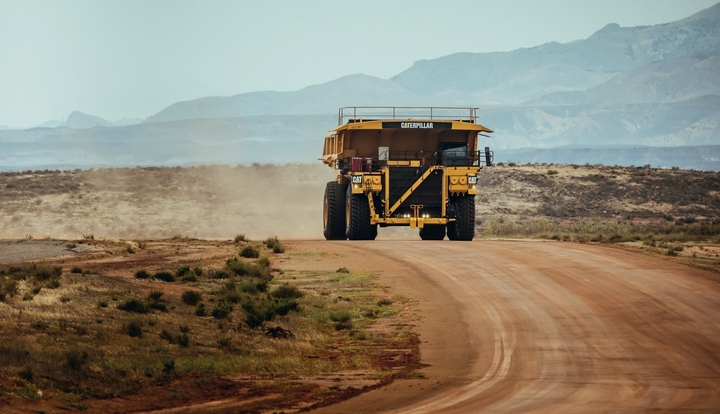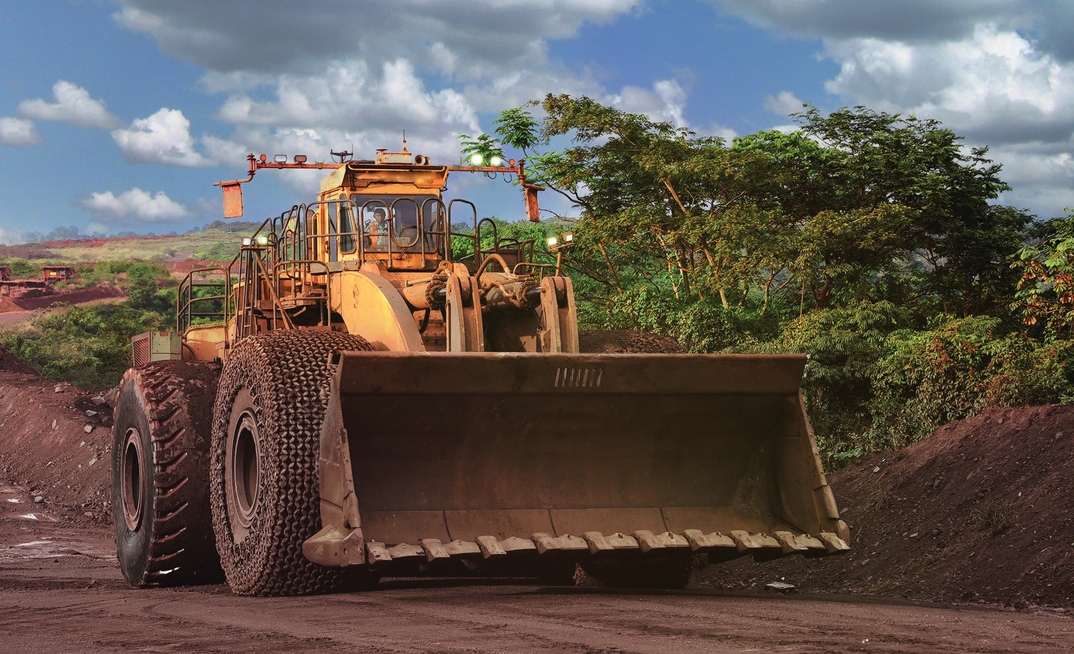Michelin has been synonymous with tyres ever since Édouard Michelin experimented with a broken bicycle and then patented the removable pneumatic tyre in the 1880s. Today, the company has an established and innovative business in the mining sector too, but its sights extend even beyond where the rubber hits the road, as 29-year veteran of the company Adam Murphy told me on a recent video call.
Based in South Carolina, US, Murphy is senior VP for Michelin's global mining business. He begins by pointing me to the fact that in 1959 Michelin introduced the first radial earth-mover tyre and in 1995 brought the first 63-inch tyre and expanded manufacturing into the US. "We've been serving the mining sector with tyres for several decades now and have been very proud to do so," he says. "The trust the brand has built up over 130-plus years is incredible and we don't take that for granted."
Not just tyres
Michelin is well known for its consumer vehicle tyres (and restaurant guides) but the company has a significant interest in the mining sector and the unique opportunities it affords to extend the breadth of what Michelon has to offer. Murphy says that the company's thinking as it relates to mining follows a simple question: "What do we have in the portfolio that will help our customers operate more productively, safely and sustainably, and what are their pain points, needs and business challenges?"
While the Michelin mining tyres have developed an excellent reputation for traction, obstacle handling and durability, the overall portfolio of mining offers is broad. It includes brands such as Fenner Conveyors, Fenner Precision Polymers and international leader of tyre management solutions KLINGE. Michelin expects non-tyre aspects of its group portfolio to represent over 20 percent of revenues by 2030.
At the heart of Michelin is the tyre itself but even the tyre has developed its own ecosystem. The company is playing a full part in adding remote inspection capabilities where tyre sensors, networking and even thermal capacity combine to mean that checking tyre conditions is not just the job of customers' technicians and maintenance staff.
In 1996, Murphy says Michelin was first to bring in temperature and pressure monitoring systems and today the company is on the fourth generation of its Michelin Earth Moving Management System (MEMS). Michelin MEMS 4 enables a mine to monitor, as Murphy puts it, "what's happening in the guts of the tyre without having someone physically there next to the tyre, which is obviously a more precarious and dangerous situation".
Michelin also collaborates with companies like HINDSITE Industries and Murphy says: "One of the ways we can bring safety to our customers is by enabling more and more remote capabilities. Our teams can conduct a tyre inspection in the mine and serve that back to view it in real time for the customer or our support team in Ladoux, France to inform of inherent dangers."
To go faster, Michelin uses a mixture of organic development, acquisitions and partnerships.
"Technology is evolving so quickly, so a lot of our innovation today is about how we leverage existing technologies and partner to stay in the forefront," Murphy says. "What's interesting is the global expansion of where that is happening. Many people are familiar with Silicon Valley, but we've also been engaging with other startups in places like Bangalore, India and the globalisation of technology presents some interesting opportunities."
Good timing
Just two years into the mining role, Murphy says he has arrived at an opportune time when Michelin must reassess how it interacts with customers.
"We're at a very interesting inflexion [point] and it really starts with our customers. One of the most enjoyable parts of the role is being able to recognise the tremendous role that our customers are playing in what I view are some of the most important changes in the world.
"Our mining customers are literally at the core of the energy transition and at the core of all of the infrastructure investment that is enabling people to live better lives around the world. All of that starts with mining and obviously creates huge opportunities but I'm increasingly sensitive that it presents huge challenges for our customers too. That's really causing us to think differently about the role we play and the way we bring value and help them navigate challenges and capture opportunities.
"We have distinct capabilities when it comes to being able to manufacture extraordinarily large and complex tyres required for mining operations but over the last couple of years we've realised that's not sufficient. Our customers need more value to simplify their lives and operations."
A big part of this value-add is integrating on a strategic level with customers, Murphy adds:
"What that means to us is being a partner that can bring more value, and we call that approach ‘Michelin Better Mining'. [The approach says] our teams are going to work as closely in your operation as you will allow us, with our engineering, services, account management and research and development teams, to understand what are the safety, sustainability and productivity challenges that are most important to you. Then we take a step back and say, ‘What do we have in our increasing portfolio in the Michelin group and what is the right combination of those to add value at your mine site?'"
Safety first
Safety is at the heart of Michelin's efforts, Murphy says.
"Everything starts with safety. We at Michelin systemically start meetings with a safety topic and our mining customers do the same. Even in our toughest meetings they start with a safety briefing, and I have a lot of respect for that."
Beyond cost per hour
One challenge he faces is to encourage thinking about the value of tyres beyond the limiting frame of cost per hour.
"One of the metrics we try to follow more and more is something called Mean Time Between Failures. That is, doing everything we can to extend time between tyre events to maximize vehicle availability."
Murphy says that the development of the 63-inch tyre followed the limiting speed of rigid dump trucks that were capable of going faster. Last year, Michelin launched the largest tyre in the world weighing over six tonnes: the 70/70R57 X MINE L4, which is the first radial tyre for the world's largest loaders. He says that advent meant customers could gain an hour and 20 minutes of working time due to higher tramming speeds enabled by the cooler operating temperatures of the radial construction and rubber compounds.
After-life
But what happens after the useful life of a tyre is important too. Michelin is laying out a roadmap for being a leader in handling end-of-life tyres and conveyer recycling. This will involve Michelin's owned and operated facilities for tyre collection and recycling or via partnerships, for example in Chile, Brazil and Peru.
But at the other end of the product's life cycle, there are major initiatives also. By 2050 plans call for Michelin to produce tyres that are 100 percent composed of renewable and recycled materials. That's far from an easy task when its tyres today can include over 200 substances. "And that isn't just a two-and-a-half decades ambition," Murphy adds. "We want to be at 40 percent by 2030, which is basically tomorrow!"
Working together
Increasingly, Murphy says, Michelin is engaged in strategic relationship management programmes with its more sophisticated customers, working alongside R&D teams, operations experts, technologists and sustainability leaders. Those customers get the message that taking care of tyre choice and maintenance can lead to productivity upswings as downtime can be scheduled and as vehicles perform faster and for longer.
"I'm an optimist by nature but particularly bullish about the opportunity in front of us, helping people live longer, healthier lives," Murphy concludes. "To me, that's the biggest inflexion: how can we find ways starting with tyres but thinking more broadly. Customers are demanding their partners bring more value so they can delegate and focus on core challenges of production, licence-to-operate and ESG."


























